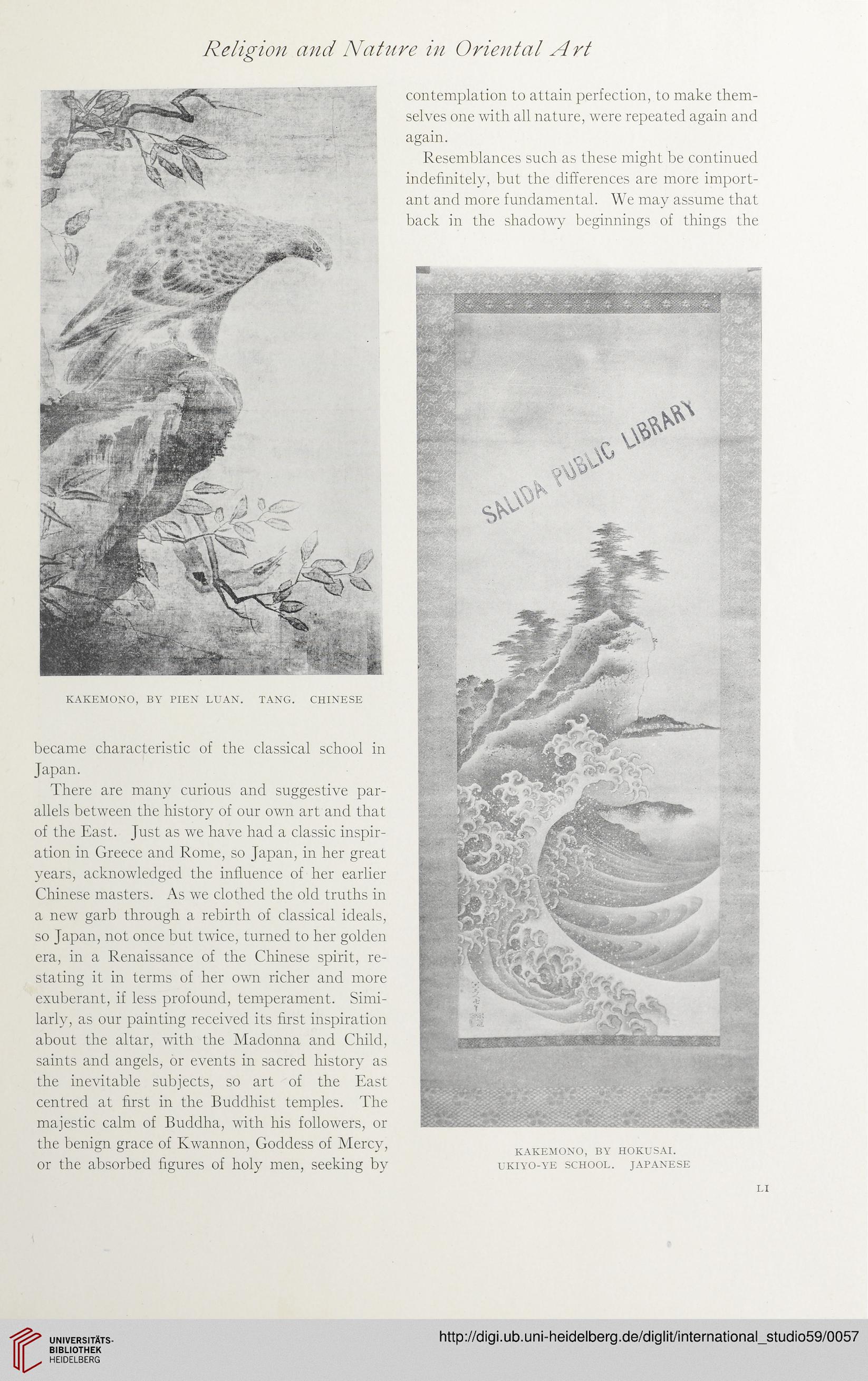Religion and Nature in Oriental Art
KAKEMONO, BY PIEN LUAN. TANG. CHINESE
became characteristic of the classical school in
Japan.
There are many curious and suggestive par-
allels between the history of our own art and that
of the East. Just as we have had a classic inspir-
ation in Greece and Rome, so Japan, in her great
years, acknowledged the influence of her earlier
Chinese masters. As we clothed the old truths in
a new garb through a rebirth of classical ideals,
so Japan, not once but twice, turned to her golden
era, in a Renaissance of the Chinese spirit, re-
stating it in terms of her own richer and more
exuberant, if less profound, temperament. Simi-
larly, as our painting received its first inspiration
about the altar, with the Madonna and Child,
saints and angels, or events in sacred history as
the inevitable subjects, so art of the East
centred at first in the Buddhist temples. The
majestic calm of Buddha, with his followers, or
the benign grace of Kwannon, Goddess of Mercy,
or the absorbed figures of holy men, seeking by
contemplation to attain perfection, to make them-
selves one with all nature, were repeated again and
again.
Resemblances such as these might be continued
indefinitely, but the differences are more import-
ant and more fundamental. We may assume that
back in the shadowy beginnings of things the
KAKEMONO, BY HOKUSAI.
UKIY0-YE SCHOOL. JAPANESE
LI
KAKEMONO, BY PIEN LUAN. TANG. CHINESE
became characteristic of the classical school in
Japan.
There are many curious and suggestive par-
allels between the history of our own art and that
of the East. Just as we have had a classic inspir-
ation in Greece and Rome, so Japan, in her great
years, acknowledged the influence of her earlier
Chinese masters. As we clothed the old truths in
a new garb through a rebirth of classical ideals,
so Japan, not once but twice, turned to her golden
era, in a Renaissance of the Chinese spirit, re-
stating it in terms of her own richer and more
exuberant, if less profound, temperament. Simi-
larly, as our painting received its first inspiration
about the altar, with the Madonna and Child,
saints and angels, or events in sacred history as
the inevitable subjects, so art of the East
centred at first in the Buddhist temples. The
majestic calm of Buddha, with his followers, or
the benign grace of Kwannon, Goddess of Mercy,
or the absorbed figures of holy men, seeking by
contemplation to attain perfection, to make them-
selves one with all nature, were repeated again and
again.
Resemblances such as these might be continued
indefinitely, but the differences are more import-
ant and more fundamental. We may assume that
back in the shadowy beginnings of things the
KAKEMONO, BY HOKUSAI.
UKIY0-YE SCHOOL. JAPANESE
LI




